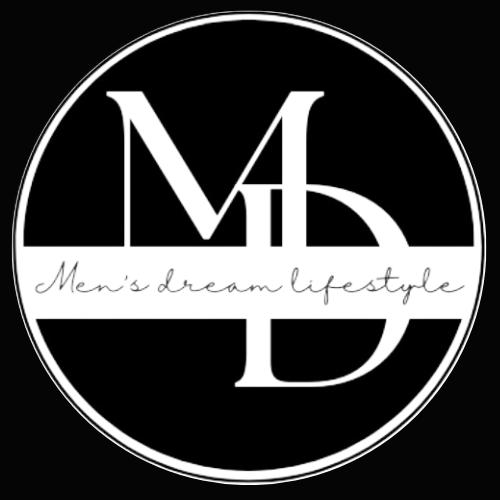How to Create a Print on Demand Store from Scratch: Step-by-Step

What’s up, creators! Whether you’re a side hustler, dream chaser, or just want to turn your creativity into cash, today’s content is your ultimate guide to building a Print on Demand (POD) store from absolute zero. No design skills? No problem. No tech background? We got you. We’re breaking down each step like a pro-level blueprint so by the end of this content, your store won’t just exist—it’ll be ready to make money. Let’s dive in.
1. What is Print on Demand & How It Works
First things first—what even IS Print on Demand?
POD is an ecommerce business model where you sell custom-designed products (like t-shirts, mugs, posters) without holding inventory. When someone buys a product, it’s printed and shipped by a third-party supplier directly to the customer. You create the design, set the price, and collect the profits—it’s that simple.
Key advantages:
No upfront inventory
Minimal startup cost
Endless customization
Scalable and automated
Popular platforms like Printful, Printify, and Gelato make this process smooth. You focus on the branding and marketing while they handle production and logistics. Now, let’s build your store.
2. Choosing Your Niche
Before you throw designs on random shirts, pause. You need a niche.
Why? Niching down helps you:
Stand out in a crowded market
Target the right audience
Speak their language in your marketing
Ideas:
Dog lovers
Gym bros
Gamer girls
Mental health awareness
Find the intersection of your passion and demand. Use tools like Google Trends, Etsy, and TikTok to validate interest. Once you’ve nailed a niche, it’s time to move on.
3. Market Research & Idea Validation
You’ve got a niche. Now let’s make sure it pays.
Steps to research:
Spy on competitors using tools like EverBee, eRank, and Sale Samurai
Read reviews to find gaps in the market
Create a mood board or idea list of phrases, visuals, and themes that speak to your niche. Research keywords they search for. You want your designs and store to scream, “Hey, this was made just for YOU.”
4. Designing Your First Products
Don’t stress if you’re not a designer.
Free & easy tools:
Canva (drag-and-drop friendly)
Kittl (pre-made templates)
Midjourney (AI-generated art)
Creative Market (buy graphics)
Design tips:
Keep it simple and bold
Use clear, readable fonts
Match design with niche culture
Make 5-10 core designs to start. Think of them as your MVPs. Test and tweak based on feedback and sales.
5. Choosing the Right POD Supplier
Not all suppliers are created equal.
Top picks:
Printful: Quality and integrations
Printify: Cheaper with vendor variety
Gelato: Fast global shipping
SPOD: Fastest production times
Compare them based on:
Product quality
Shipping speed
Print locations
Mockup generator
Product range
Sign up, connect your store, and test order your own merch. You need to KNOW what your customer will receive.
6. Picking a Selling Platform
You need a place to sell. Here are your main options:
Shopify: Best for branding and full control
Etsy: Great for traffic but has seller fees
Amazon Merch: Built-in audience, low control
WooCommerce: WordPress-friendly
For beginners: Shopify + Printful/Printify is a winning combo.
Get a custom domain. Set up your store layout, add pages (Home, Shop, About, Contact), and connect your POD app. You’re officially in business.
7. Creating Killer Product Listings
It’s not just about a pretty design. Your product page needs to sell.
Checklist:
Catchy product title (with keywords)
High-quality mockups and lifestyle images
Detailed descriptions (material, fit, care)
Bullet points for benefits
Tags for SEO
Use emotional triggers. Instead of “Cat T-shirt,” say “Funny Cat Tee for Sassy Pet Lovers.”
8. Building Your Brand Identity
Branding = Trust + Connection.
Elements to define:
Brand name and logo
Color palette and fonts
Brand voice (funny, bold, minimalist?)
Packaging style (custom labels, thank-you cards)
Create a vibe that resonates with your niche. Consistency across your store, socials, and emails builds loyalty.
9. Marketing Like a Boss
Time to bring eyeballs to your store.
Free strategies:
TikTok reels of your product in action
Pinterest pins with mockups
Instagram stories and polls
Email list with discounts
Paid strategies:
Facebook Ads targeting your niche
Google Shopping ads
Influencer collabs can drive major traffic. Gift products to micro-influencers for reviews.
10. Scaling & Automation
You’ve made your first sale. Now let’s scale.
Steps:
Analyze bestsellers and double down
Use tools like Klaviyo for email marketing automation
Outsource design or customer service via Fiverr
Launch new products every month
Bundle products for higher order value
Track your metrics: conversion rate, average order value, return rate. Data is your business’s best friend.
Boom. You just got the entire roadmap to build a print on demand empire from scratch. Whether you’re aiming for a side hustle or a full-time income, remember: action beats perfection. Don’t just binge tutorials—start uploading, testing, tweaking. The internet is your marketplace and creativity is your currency. Now get out there and build it. Your future store is waiting.
Men’s trending fashion and how to look attractive. Here teaching fashion, so make sure to check it out.
Men’s Fitness tips, what you eat and how to stay fit your body. The best workout and best diet plan, so make sure to check it out.
Men’s lifestyle tips, how to live a better life, and changing your lifestyle tips, so make sure to check them out.
It cannot be denied that men have finally come to their senses when it comes to good grooming and fashion statement.
Men are also equally frustrated with bad hair days in their life, even though not as annoyed as women. Even though men have short haircuts, they also face problems in maintaining their hair.
There are no formulae for success but there are some successful entrepreneur tips that can help make things a little simpler.









